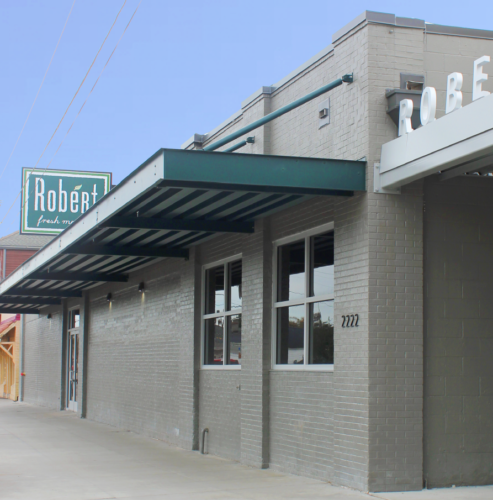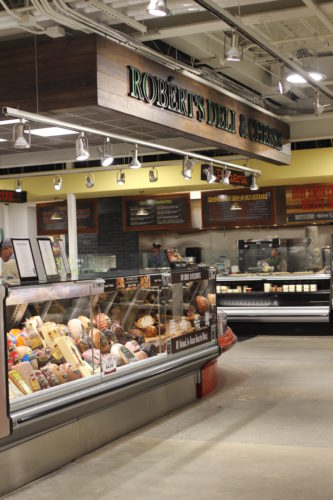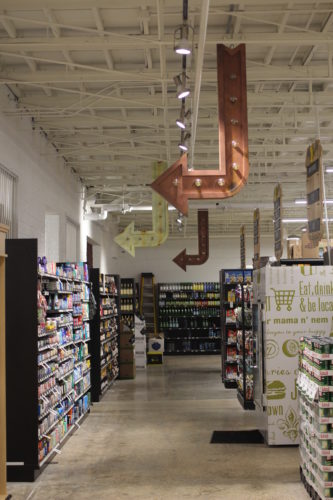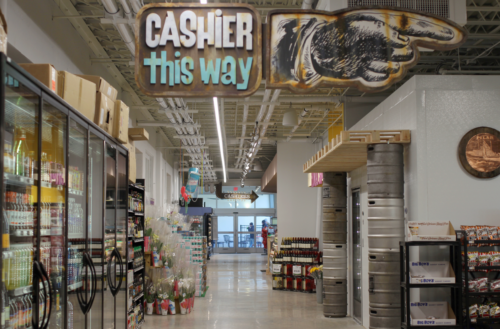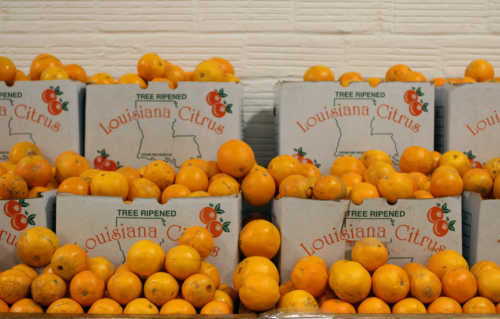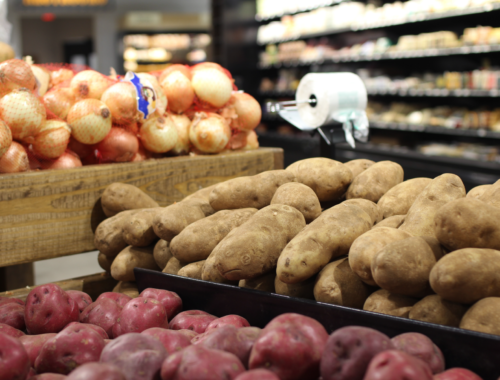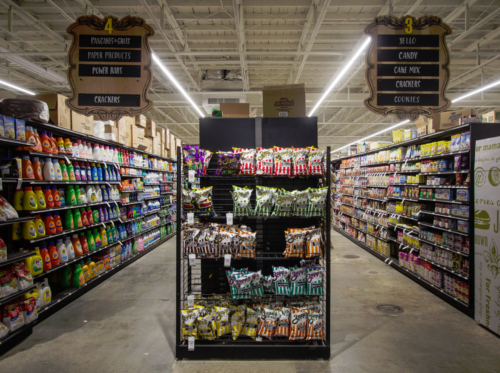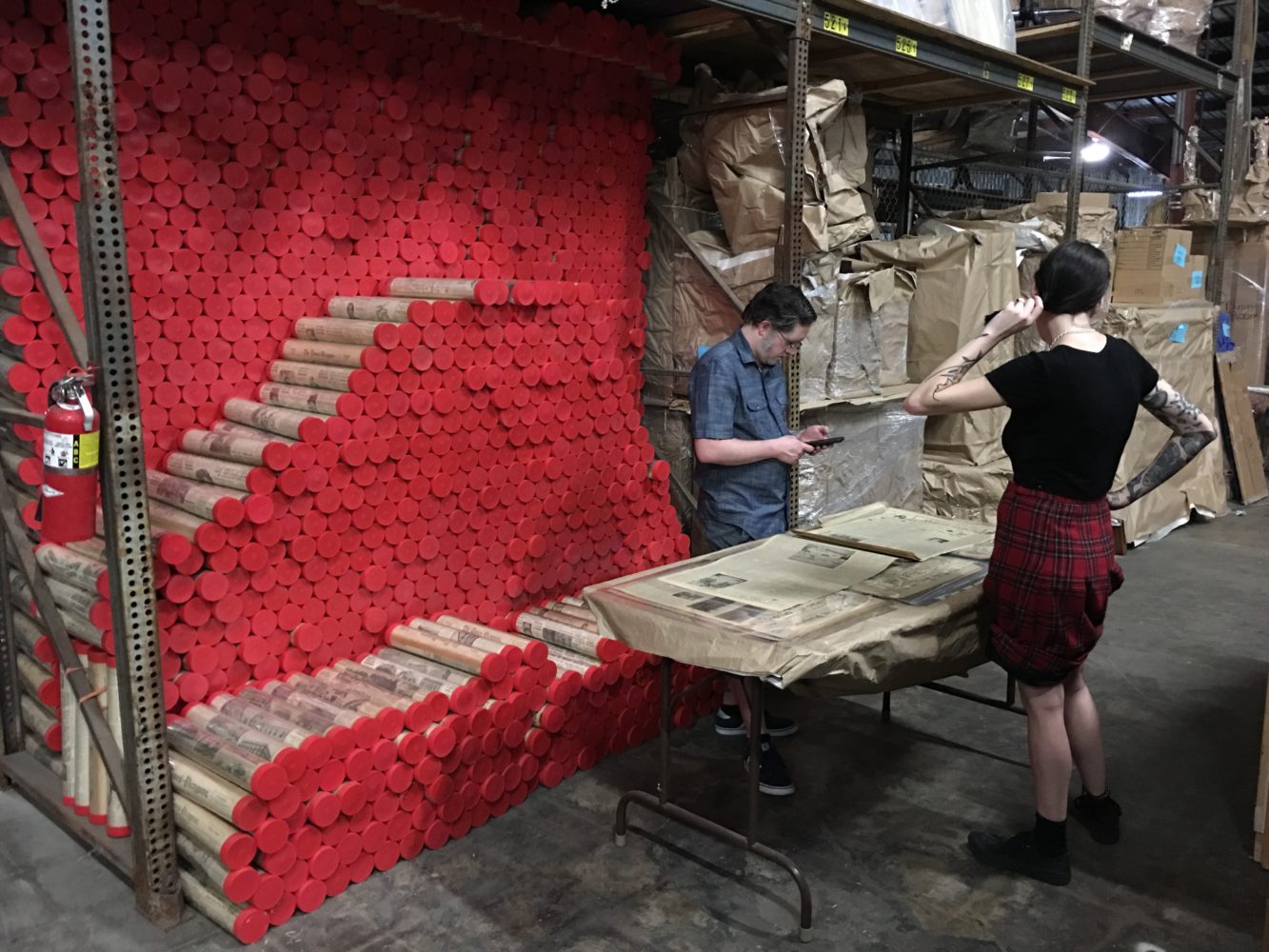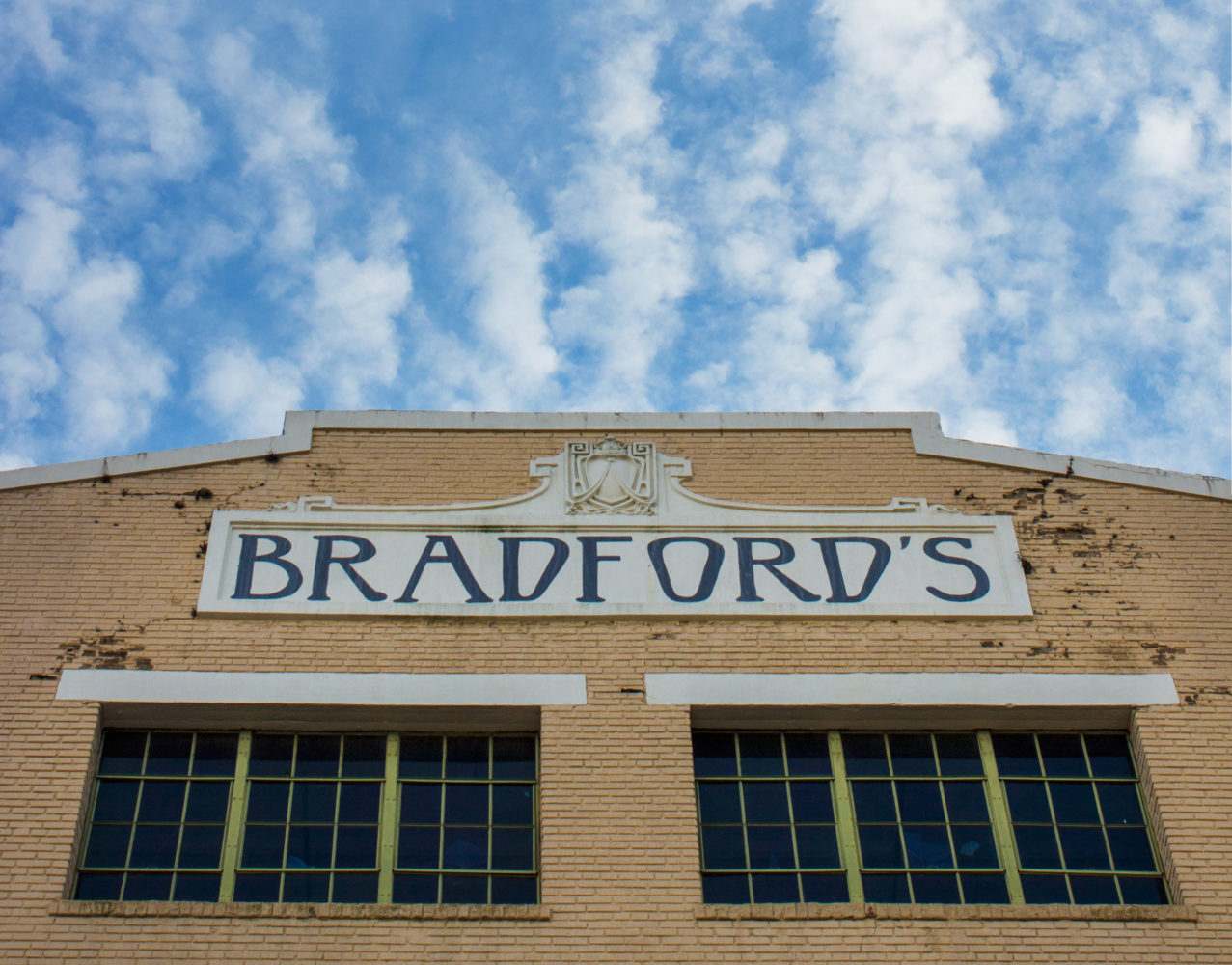This story first appeared in the February issue of the PRC’s Preservation in Print magazine. Interested in getting more preservation stories like this delivered to your door each month? Become a member of the PRC for a subscription!
Robert Fresh Market, a Louisiana-based grocery chain founded in 1994, is once again open for “makin’ groceries” on St. Claude Avenue in the Faubourg Marigny. The market officially reopened on Dec. 30, 2017, and according to Marc Robert III, general manager of Robert Fresh Market, the store was “swamped” with customers as soon as its doors opened.
Robert, located at 2222 St. Claude Ave., first opened in the 1990s, filling the rather larger shoes left behind by the iconic Schwegmann Giant Super Market, which originally opened on that site in 1946. After suffering damage from Hurricane Katrina, the market on St. Claude closed.
However, the goal of Robert’s return soon became an odyssey of sorts, and the Robert family never gave up. Along the way, the process was hindered by several years of litigation over insurance claims from the storm, and legal disputes with then-property owners the Schwegmann family.
Finally, in 2014, litigation was settled and the Robert family took ownership of the property. Plans for the return of Robert Fresh Market quickly resumed.
The firm Trapolin-Peer Architects joined the development team in 2013. “The building didn’t fall within the period of significance for the neighborhood, so it did not automatically qualify for Historic Tax Credits,” said Gene Guidry, associate at Trapolin-Peer Architects. It was originally built in 1946, but buildings had to have been built nearly four decades before that to qualify for tax credit financing in the Marigny.
So an alternate route to qualifying for Historic Tax Credits, which in Louisiana can refund developers up to 40 percent of qualified expenditures when rehabbing a historic structure for commercial use, had to be found to finance the project. One possible route was to have the building certified by the National Park Service as a National Landmark. Noted local historian Hilary Irvin researched the building “and presented the case to the state board,” said Peter Trapolin, president of Trapolin-Peer Architects. “They accepted the nomination, and sent it to the National Park Service for certification as a National Landmark.
“The building by itself is nondescript, but it was submitted under the category of commerce,” Trapolin said. “The significance is that it was the first self-serve grocery in New Orleans, and Schwegmann’s first supermarket.” The beloved but extinct chain was originally founded as a small neighborhood grocery only a short distance away in the Bywater — Schwegmann’s Grocery and Bar opened in 1869 at the intersection of Burgundy and Piety streets — but their expansion into this building on St. Claude brought the first supermarket to the city to have such features as checkout stands, individual item price marking, and shopping carts. At a time when small grocers would fill customers’ orders personally, the new supermarket introduced self shopping, encouraging people to go down the aisles themselves and pick out whatever they pleased. The National Park Service agreed that this history made the site significant, and the project qualified for Historic Tax Credits, which significantly offset the $9.5 million total project cost.
The owners also received a $1 million loan from the city’s Fresh Food Retailer Initiative, half of which is forgivable.
“The city’s Fresh Food Retailer Initiative allows us to increase access to fresh food options for our citizens in neighborhoods that need it most,” Mitch Landrieu, Mayor of New Orleans, said about the Fresh Food Retailer Initiative when it was launched. “Projects like this create jobs, generate taxes, bring vacant properties back into commerce, and reinvigorate neighborhoods.” The Robert project clearly fits the vision for the intent of the funding perfectly.
Marc Robert II, owner and CEO of Robert Fresh Market, said of the development, “We’ve created a concept that upholds the integrity and authenticity of the area, while bringing the neighborhood a fresh, full-service grocery they need.” While the Marigny has a few small grocers, the neighborhood, plus that of surrounding Bywater, St. Roch and Holy Cross, lack a large-scale grocery store. The impact of Robert’s opening a 26,000-square-foot grocery store in this food desert will undoubtedly be significant.
The project also boasts 12,200-square-feet of retail space with room for at least seven tenants. Metairie Small Animal Hospital, the first tenant, is set to open in the Marigny space in May of this year.
“This project provides a unique opportunity for us to create a humane, compassionate, and caring environment in the heart of New Orleans,” said Dr. Rene Baumer, partner at Metairie Small Animal Hospital.
“Together, we will be able to serve the needs of our neighbors by bringing services and products that are not currently accessible in the area,” Robert II said. From the crowds already packing the grocery store in the few short weeks it has been open, it looks certain that the neighbors are excited.
Photos by Liz Jurey




